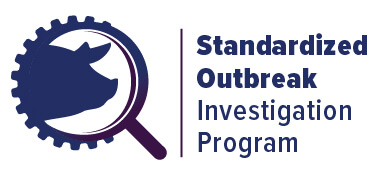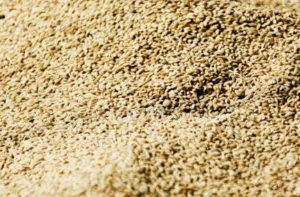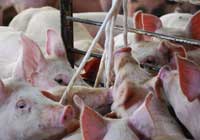
The Swine Health Information Center, launched in 2015 with Pork Checkoff funding, protects and enhances the health of the US swine herd by minimizing the impact of emerging disease threats through preparedness, coordinated communications, global disease monitoring, analysis of swine health data, and targeted research investments.

The World Organisation for Animal Health reported on November 28, 2025, that African swine fever has been detected in wild boars found dead in Barcelona Province, Spain. The confirmation, dated November 27, 2025, marks the country’s first ASF occurrence since September 30, 1994—ending more than three decades of being free of the disease.
According to a Reuters report published November 30, 2025, the number of suspected cases has grown since the initial finding. Two wild boars tested positive initially, while an additional 12 wild boar are undergoing diagnostic testing. If confirmed, the total would rise to 14 cases.
Spanish authorities have launched immediate response measures, including surveillance and containment efforts. Several international trading partners have already restricted imports of Spanish pork, a sector valued at €8.8 billion ($10.2 billion) annually, as noted by Spain’s Agriculture Minister Luis Planas.
The re-emergence of ASF in Spain underscores the ongoing challenges posed by the virus across Europe and highlights the critical importance of continued biosecurity vigilance in protecting both animal health and global trade.

The Swine Health Information Center recently funded 12 new projects addressing research priorities and topics published in its 2025 Plan of Work. This effort helps the organization fulfill its mission to generate new intelligence for preventing, preparing for, and responding to emerging swine disease threats. Funded research areas span across the Center’s five strategic priorities: improve swine health information, monitor and mitigate risks to swine health, responding to emerging disease, surveillance and discovery of emerging disease, and swine disease matrices. The new projects were initiated in fall 2025 and range from nine to 15 months in duration. Research outcomes from the funded projects will provide critical information and resources to help pork producers as they face emerging disease challenges in their swine herds.
Newly funded projects addressing SHIC’s research priorities include enhanced monitoring of swine diseases, mitigation strategies for emerging disease preparedness and response, novel biosecurity practices for reducing disease risks, diagnostic assay development for emerging diseases, whole genome sequencing as a forensic diagnostic tool, clinical relevance of newly identified agents from veterinary diagnostic lab submissions, and modernization of swine pathogen prioritization.
The SHIC 2025 Plan of Work Request for Proposals received 57 proposals from 19 institutions with available funds totaling $1.5 million. Funding timely research is an essential component to SHIC providing project outcomes that drive action for emerging disease prevention, preparedness, mitigation, and response for the US swine industry.
SHIC 2025 Plan of Work projects funded and initiated in response to the RFP include:
Improve Swine Health Information
▪️Expand the Domestic Swine Disease Surveillance laboratory networking – Include Illinois Veterinary and Diagnostic Laboratory
⚬ Principal Investigator: Giovani Trevisan, Iowa State University
⚬ Objective: Expand the SDRS laboratory network and regional representativeness by incorporating historical and prospective data from the Illinois Veterinary Diagnostic Laboratory.
▪️ISU technological transfer and implementation at OH ADDL of confirmed tissue disease diagnosis codes and prospective reporting to the SDRS
⚬ Principal Investigator: Giovani Trevisan, Iowa State University
⚬ Objective: Transfer and implement the current ISU VDL disease diagnosis Dx code matrix to OH ADDL for expanded data collation in monthly reports.
Monitor and Mitigate Risks to Swine Health
▪️Investigating trailer contamination rates and related factors at the cull sow harvest plant
⚬ Principal Investigator: Cesar Corzo, University of Minnesota
⚬ Objective: Determine the seasonal probability of PRRSV, PEDV, PDCoV, TGEV, and SVA trailer contamination at the cull sow harvest facility-trailer interface and investigate factors that contribute to contamination probability.
▪️Evaluation of harvest plant dock protocols to reduce viral transfer to market hog trailers
⚬ Principal Investigator: Cesar Corzo, University of Minnesota
⚬ Objective: To determine whether transfer of viruses from the dock to the trailer occurs when using disposable plastic boots and/or a surface powder sanitizer and assess the unloading interventions that prevent the next load of pigs and farm from becoming infected.
▪️Assessing pathogen contamination in dead boxes of PRRSV-negative swine farms
⚬ Principal Investigator: Igor Paploski, University of Minnesota
⚬ Objective: Assessing the viral contamination around dead animal disposal structures in PRRSV or PEDV negative farms and investigate if rendering vehicles can spread infectious agents between farms.
▪️Bridging industry data and disease risk: movement and biosecurity insights into PRRSV outbreaks
⚬ Principal Investigator: Gustavo De Sousa E Silva, Iowa State University
⚬ Objective: Assess the association of movement types with the timing and frequency of PRRS outbreaks; identify the roles of highly connected sites, trucks, and personnel associated with outbreaks, describe high-risk movement patterns.
Responding to Emerging Disease
▪️Determining the diagnostic test characteristics of Japanese encephalitis virus RT-rtPCR assay using clinical samples in Australia
⚬ Principal Investigator: Rahul K Nelli, Iowa State University
⚬ Objective: Develop and evaluate the diagnostic specificity and sensitivity of pan-JEV RT-rtPCR assay using field samples of known status from Australia.
Surveillance and Discovery of Emerging Disease
▪️Characterization of a PEDV variant strain associated with the recent outbreaks in Illinois and Iowa
⚬ Principal Investigator: Jianqiang Zhang, Iowa State University
⚬ Objective: Characterize the PEDV 6-nt deletion variant in comparison with a 2013 non-S INDEL PEDV using a pig challenge model for their virulence, duration of virus shedding, and cross protection.
▪️Improving molecular surveillance of PRRSV-2: Quantifying global and domestic risks of PRRSV-2 variants of concern
⚬ Principal Investigator: Kimberly VanderWaal, University of Minnesota
⚬ Objective: Expand lineage-variant classification to other countries to monitor transboundary introductions of PRRSV-2, inform international swine disease risks, and improve the quality of swine health information for PRRSV-2 by enabling PRRS-Loom dashboard end-users to visualize their own sequences.
▪️Optimizing the TELSVirus workflow for improved surveillance and characterization of swine respiratory viruses
⚬ Principal Investigator: Noelle Noyes, University of Minnesota
⚬ Objective: Increase the sensitivity of the TELSVirus workflow for low-abundance respiratory viruses in oral fluid samples, modify the workflow to accommodate low-input samples, improve the utility of WGS analysis from TELSVirus data.
Swine Disease Matrices
▪️Evaluating PEDV non-S INDEL and S INDEL spike gene-based differential PCRs and determining the detection frequency of these two PEDV strains
⚬ Principal Investigator: Jianqiang Zhang, Iowa State University
⚬ Objective: Evaluate four PEDV non-S INDEL and S INDEL gene-based differential real-time PCR assays and determine the detection frequency of non-S INDEL and S INDEL PEDV strains in PEDV screening PCR-positive samples.
▪️Modernizing Pathogen Prioritization for US Swine Health: A Risk-Based Framework for 2025 and Beyond
⚬ Principal Investigator: Eric Neumann, Epi-Insight USA
⚬ Objective: Develop a harmonized, multi-criteria framework with transparent definitions to prioritize both viral and bacterial swine pathogens and deliver reproducible tools and documentation to allow future updating of the matrices.
In addition to these 12 projects, six projects addressing the SHIC 2025 Plan of Work have been selected for awards through a co-funding partnership with the Foundation for Food & Agriculture Research. Aligning across both organizations’ priorities, these six projects will be announced in the coming weeks.

The Swine Health Information Center-funded Standardized Outbreak Investigation Program (SOIP) web application, developed by Iowa State University and introduced in December 2023, now has new training videos and a written guide available for end-users. Developed to assist veterinarians and producers as they capture data from disease outbreak investigations in a secure industry database, SOIP provides a platform for consistent data collection, pinpointing risks for pathogen entry, and driving sustainable biosecurity improvements.
The new written training guide and training video resources are now available to support continued use, ease navigation, and broaden adoption of the web-based program. Videos can be viewed on the SHIC YouTube channel. The video resources contain two separate modules that include multiple short how-to episodes that guide users on how to access and fully utilize the various components of the SOIP, including farm or system start-up, data entry, creating farm maps, reviewing the investigation process, generating reports, and interpreting hazards.
SHIC Training Videos include:
Module 1
• Episode 1: The Organization of the SOIP
• Episode 2: How to Add a Company Representative in the SOIP
• Episode 3: Who Can Delete Sites, Users, and Companies in the SOIP
• Episode 4: How to Set Up Sites and Build Site Maps in the SOIP
• Episode 5: How to Delete or Edit Existing Sites in the SOIP
• Episode 6: Overview of the Pre-Investigation Survey Section of the SOIP
• Episode 7: Overview of the Questionnaire Section of the SOIP
• Episode 8: How to Edit an Existing Investigation in the SOIP
• Episode 9: How to Update Master Mapping Information in the SOIP
• Episode 10: How to Unlock a Locked Investigation in the SOIP
• Episode 11: How to Interpret a Detailed Report in the SOIP
• Episode 12: How to Interpret an Executive Summary in the SOIP
Module 2
• Episode 1: The Purpose of the SOIP
• Episode 2: Terminology Used in the SOIP
• Episode 3: The Process for Conducting an Outbreak Investigation – The Investigation Phase
• Episode 4: The Process for Conducting an Outbreak Investigation – The Investigation Form
• Episode 5: The Process for Conducting an Outbreak Investigation – The Post-Investigation Phase
Developers of SOIP and SHIC encourage the use of the app due to the following benefits:
• All outbreak investigation data and related information (diagnostic reports, animal movement information, etc.) are stored in a centralized database system for easy access and management.
• The platform allows multiple investigators/production/farm staff to access, share, and contribute to the investigation enhancing collaboration across teams.
• The system automatically generates site maps and incorporates daily local weather data during the investigation period.
• Users can generate custom forms allowing for targeted data collection to focus on pathogen entry events during the investigation period.
• The application helps users identify risks through built-in logic to flag responses that may indicate potential biosecurity hazards.
• Completed investigation forms can be automatically compiled into comprehensive reports.
• Facilitates collective learning from the experiences of veterinarians and producers by highlighting the most frequent biosecurity gaps identified across the US swine industry.
For use of the web-based application, veterinarians should contact the Iowa State University-based administrator for access, a one-time process, at [email protected].
The SOIP application can be used by veterinarians and producers to identify and prioritize biosecurity hazards, manage and prevent pathogen introduction, and prepare for seasonal challenges so that production systems can enhance biosecurity control measures accordingly. The development of resources that support continued utilization of the SOIP helps SHIC fulfill its mission to protect and enhance the health of the US swine herd by supporting efforts to prevent, respond to and mitigate emerging, re-emerging, and transboundary swine diseases.

The Swine Health Information Center (SHIC) and the U.S. Department of Homeland Security Science and Technology Directorate (DHS S&T) are marking three years of successful collaboration to better understand and reduce the risk of African swine fever virus (ASFV) transmission through feed ingredients. Supported by a $650,000 grant from the U.S. Department of Agriculture National Institute of Food and Agriculture (USDA NIFA), this five-year project continues to make significant strides in protecting the U.S. swine herd from one of the most serious global animal health threats.
The USDA NIFA-funded research, conducted in partnership with DHS S&T at the Plum Island Animal Disease Center (PIADC), investigates ASFV stability in soybean-based feed ingredients and enhances diagnostic tools to detect virus contamination. The partnership represents a strong model of cooperation between stakeholder organizations and federal agencies, uniting expertise, infrastructure, and shared goals to safeguard U.S. agricultural biosecurity.
Feed biosecurity is an important aspect of overall agricultural biosecurity, as previous research has proven that contaminated feed and ingredients can serve as a source for introduction and spread of transboundary animal diseases. Soybean products, widely used in complete pig feeds, are globally traded and can pose a potential disease introduction risk if imported from ASFV endemic countries or regions.
Led by SHIC Executive Director Dr. Megan Niederwerder in partnership with DHS Principal Investigator Lindsay Gabbert at PIADC, research milestones have been achieved, including:
“The collaboration with DHS at Plum Island, made possible through USDA NIFA support, is an outstanding example of federal–industry partnership in action,” said Dr. Niederwerder. “Together, we are generating science-driven solutions that help protect US swine producers and strengthen agricultural defense across the feed supply chain.”
Data generated through this ongoing partnership helps define the relative risk of different soybean products used in swine feed, supports diagnostic advancements, and informs mitigation strategies for industry and regulatory use. Results are being shared with pork producers, veterinarians, and feed industry stakeholders through SHIC annual reports, peer-reviewed publications, and scientific meetings.
This project is supported by the Agriculture and Food Research Initiative Competitive Grant no. 2022-67015-38576 from the USDA’s National Institute of Food and Agriculture A1181 Agricultural Biosecurity program. Any opinions, findings, conclusions, or recommendations expressed in this publication are those of the authors and do not necessarily reflect the view of the U.S. Department of Agriculture or U.S. Department of Homeland Security.

The Swine Health Information Center has renewed funding for the Domestic Swine Disease Monitoring Report through September 2026. Leading the project are Drs. Giovani Trevisan and Daniel Linhares at Iowa State University. Since 2017, SHIC has funded the reports under the Swine Disease Reporting System initiative, focusing on the analysis and reporting of collated veterinary diagnostic laboratory data to identify emerging endemic disease trends. Reports provide producers with an early warning system to prompt preventative actions such as increasing herd surveillance and heightening biosecurity or biocontainment measures. SDRS is the largest publicly available source of swine health information from six US veterinary diagnostic labs and represents >97% of all swine samples submitted for testing. Reported data includes activity of nine pathogens across all age groups, production phases and sample types.
The annual report highlighting activities and accomplishments of the Project from October 2024 – September 2025 can be found as SHIC project #24-098 here.
SDRS continues to provide real-time, science-based information on endemic and emerging pathogens, supporting early detection and disease management efforts to benefit the US swine herd. Continuously updated metadata includes site state, date of receipt, farm type, pig age, and PCR test results for several endemic swine pathogens, namely PRRSV-1, PRRSV-2, PEDV, PDCoV, TGEV, M. hyopneumoniae, PCV2, PCV3, Escherichia coli, and IAV. Additional PRRSV ORF5 sequencing information, organized by lineage, variant, and RFLP, with a feature to search and compare a provided sequence, is also available.
Data includes pathogen activity across all age groups, from boar studs to breeding herds to grow-finish pigs, and a wide variety of specimens, including biological, feed, and truck/environmental samples. The six participating laboratories are ISU-VDL, UMN-VDL, SDSU-ADRDL, KS-VDL, OH ADDL, and Purdue ADDL. SDRS pathogen monitoring supports programs such as the PEDV Elimination Task Force and providing information for the US SHIP program.
In the last year, a major update to SDRS included implementing a new PRRSV ORF5 variant and PRRSV-1 lineage classification system in the dashboards and the PRRSV BLAST tool. Adding a PRRSV variant and lineage classification in the online dashboards aids in epidemiological investigations and enables monitoring of emerging new variants, such as the 1C.5.32 that started to have clonal expansion in 2024. Educational material to help interpret the new PRRSV ORF5 sequence data was published on the SDRS YouTube channel. In addition, revamped SDRS state-level monitoring and PRRSV ORF5 sequence dashboards were updated on the SDRS website. State-level monitoring was updated through the development of an internal analytical tool to analyze state-level changes, providing producers and veterinarians with increased granularity of PRRS distribution. Leveraging SHIC funding, this work was developed in partnership with a USDA funded project.
A new PEDV facility category was also introduced last year to monitor PEDV PCR activity across truck washes, packing plants, and vehicles. This addition provides information about the positivity of PCR submissions coming from these facilities. This data helps producers and veterinarians understand PEDV detection dynamics outside of the farm during transport and harvest, raising alerts for enhanced biosecurity when PEDV activity is high in the facility category.
A new SDRS survey was created and is available on the SDRS website to allow stakeholders to provide input about potential ideas for continued SDRS improvements and expansions. This new tool enables anonymous suggestions to be offered to the SDRS team, creating a new channel for feedback from the industry to suggest SDRS changes, in addition to the SDRS Advisory Council.
From October 2024 to September 2025, 12 monthly PDF and audio reports were disseminated within the SHIC newsletter, summarizing diagnostic results from the six participating laboratories. These reports were also distributed via email to 686 subscribers from 236 organizations, a 44% increase from the previous year, and reached 21 countries. Video summaries on LinkedIn, YouTube, and Instagram accumulated over 67,000 views.
SDRS continues to provide high-value disease surveillance reports through integrating, monitoring and sharing information regarding emerging and re-emerging swine health threats. Renewal of the program will allow SDRS to continue to enhance domestic swine disease monitoring, inform pathogen elimination programs, support informed decision-making, and help protect the health and productivity of the US swine herd. SHIC support is also contributing to a path for SDRS to actively train the next generation of animal health professionals on surveillance approaches. During 2025, an MBA, MS, and PhD student aquired their degrees working with the SDRS while another PhD student used SDRS content in one of their PhD chapters.

The Swine Health Information Center is co-hosting a special session entitled, “Novel Tools & Technologies to Address Emerging Diseases of Swine” at the upcoming NAPRRS/NC229 International Conference of Swine Viral Diseases (ICSVD) scheduled for January 16 – 17, 2026, in Chicago, IL. This annual educational symposium draws together academic researchers, industry professionals, veterinarians, producers, and swine disease diagnosticians to present the latest research results and advances in emerging viruses, swine health, biosecurity, diagnostics, and applied swine disease management on the farm.
SHIC has invited four principal investigators and two graduate students to provide project updates and research results from SHIC-funded studies. Coordinated communication and broad dissemination of swine health information to industry stakeholders is part of SHIC’s mission to minimize the impact of emerging disease threats. Working with the NAPRRS/NC229 Planning Committee offers the opportunity to expand SHIC’s reach by sharing outcomes from studies conducted because of the Center’s research priorities. Moderating the session will be Dr. Megan Niederwerder, SHIC’s Executive Director, and Dr. Lisa Becton, SHIC’s Associate Director.
Topics and presenters for the SHIC special session at the NAPRRS/NC229 Symposium include:
SHIC’s Role in Mitigating Emerging Disease Threats – Dr. Megan Niederwerder and Dr. Lisa Becton
Evaluating H5N1 Risk to Swine: Mammary Transmission and Clinical Presentation in Lactating Sows – Dr. Cody Warren, The Ohio State University
Vector Competence and JEV Pathogenesis & Immunity in Domestic Pigs – Dr. Angela Bosco-Lauth, Colorado State University
Design and Evaluation of an Autonomous LAMP-based Viral Smoke Detector for Onsite Monitoring of Emerging Viruses in Swine Farms – Dr. Igor Paprotny, University of Illinois, Chicago
Improving Next-generation Sequencing for Detection of Emerging Swine Viruses – Dr. Leonardo Caserta, Cornell University
Lightning Talks:
Assessing Viral Environmental Contamination in Mortality Management Structures – Rafael Medeiros de Ávila Melo, University of Minnesota
Assessment of Viral Contamination in Trailers During Pig Unloading at a Harvest Facility – Lucas Ferreira, University of Minnesota
Launched in 2003 as the International PRRS Symposium, the NAPRRS/NC229 ICSVD has continually strengthened collaboration within the international swine-disease community. What began as a gathering focused on PRRS has evolved into a comprehensive forum addressing other emerging and transboundary viral diseases affecting global pork production. For those interested in attending, complete information on registration and hotel accommodation can be found here.

Funded by the Swine Health Information Center, a study establishing oral fluid sampling guidelines for group-housed sows was recently finalized. Led by Dr. Jeff Zimmerman at Iowa State University, the project goals were to characterize group-housed sow behaviors associated with oral fluid sampling and establish best practices for sample collection as a function of gestation stage, parity and pen size. The results determined that oral fluids sampling can be easily conducted in group-housed sows with two important recommendations to maximize participation: 1) providing two ropes per pen and 2) allowing a sample time of 60 – 90 minutes.
Find the industry summary for Swine Health Information Center project #24-008 here.
In recent years, there has been a shift in some breeding herds to housing sows in groups, prompting the need for validating practical and cost-effective disease surveillance protocols in this population. The goal of this study was to develop sampling guidelines to optimize the collection of oral fluids for group-housed sows.
The project was conducted on a commercial breed-to-wean sow farm (6,500 head) across 12 pens with each pen holding 56 mid-gestation females sorted by parity. Oral fluids (using two ropes per pen) were collected for four consecutive days across the 12 pens: three pens of gilts, three pens of parity one sows, and six pens of multiparous sows. Sow behavior towards the ropes was characterized by individually marking a sub-set of animals and a 90-minute video observation was recorded. A food coloring dye was used to ensure detection of the environmental target in the oral fluids samples.
Results confirmed that oral fluids can be routinely collected from group-housed gestating sows using cotton ropes, a process used successfully in growing pig populations. In all groups and on all sampling days, the volume of oral fluid collected during the study was more than adequate for diagnostic testing. However, sampling time in group-housed sows should be extended to 60 to 90 minutes to maximize participation, a longer duration than what is recommended for use when sampling growing pigs.
The longer sampling time is needed for sows due to their larger size and the fact that fewer sows can access the ropes at any given time when compared to growing pigs. The use of two ropes per pen is recommended to provide adequate access and reduce competition across sows. In addition, to reduce diagnostic costs, the two sample ropes from the same pen can be pooled prior to testing.
This study showed that diagnostic targets in the pen environment are transferred into pen-based oral fluid samples, confirming previous report findings in a study conducted with finishing pigs (Tarasiuk et al. 2024). This explains why pathogens not shed via the oral cavity (for example, PEDV) are consistently detected in oral fluids. As pigs explore their surroundings, diagnostic targets in the pen environment are picked up; as a result, these targets are deposited in the oral fluid sample and detected by diagnostic testing. These results highlight the ease of oral fluid collection and provide guidance for producers on best practices to routinely monitor herd health and detect emerging diseases in group-housed sows through oral fluids.
Reference: Tarasiuk et al. 2024. Pen-based swine oral fluid samples contain both environmental and pig-derived targets. Animals 14(5):766. https://doi.org/10.3390/ani14050766.

By Dr. Jasmine Bruno, Scientific Program Director, Foundation for Food & Agriculture Research
As migratory birds head south for the winter, they unwittingly carry an unwelcome passenger, the H5N1 strain of highly pathogenic avian influenza (HPAI), or bird flu. With each stop at a pond to drink or a field to feed, they shed the virus, spreading it invisibly across landscapes and into new hosts. In recent weeks, HPAI cases have surged nationwide, with the virus detected in 65 commercial and backyard flocks across the country in October and affecting an estimated 3.6 million birds, according to the USDA.
Despite its name, bird flu doesn’t stop with birds. The virus infects other animals, including humans. In recent months, infections have also been confirmed in dairy cows and other mammals in a half dozen states.
The persistence and adaptability of HPAI make one thing clear: efforts to control and prevent the disease since the current outbreak began in the U.S. in early 2022 have fallen short. Despite widespread biosecurity measures and culling protocols, HPAI continues to evolve and spread, reigniting concerns about the U.S. preparedness to respond to outbreaks. Its continued spread underscores the urgent need to deepen our understanding of the virus and develop more comprehensive, coordinated strategies to protect U.S. agriculture and food security.
That is why the Foundation for Food & Agriculture Research (FFAR) has been investing in science-based solutions targeting HPAI since the current outbreak began, funding 16 projects across poultry, swine and dairy. FFAR identifies and supports the most promising research aimed at safeguarding animal health, protecting producers and strengthening the nation’s food security.
FFAR understands that the fight against HPAI demands collaboration and innovation. By working closely with farmers, researchers and industry partners, like the Swine Health Information Center (SHIC) and USPOULTRY, we are advancing multi-species research to outpace the virus and address the disease throughout the production chain.
Among these initiatives is research to develop faster, more reliable diagnostic tools that can detect HPAI before outbreaks spiral out of control, giving producers and veterinarians precious time to respond. Other FFAR-funded projects are advancing vaccine development, as well as new biosecurity strategies that can be implemented across farms of all sizes.
For example, with FFAR funding, Barnwell Bio researchers are creating a waste-stream animal health monitoring system designed to detect the virus in asymptomatic and pre-symptomatic infected animals, an approach that could revolutionize early warning and prevention. Additional teams are evaluating the effectiveness of chemical controls for decontaminating milk and identifying outbreak prevention strategies through the WaterFowl Alert Network, the world’s first remote-sensing tool designed to predict, daily, where waterfowl roost and migrate.
Additionally, years before HPAI spread beyond birds, FFAR-funded research at Purdue University helped lay the groundwork for a breakthrough multi-species test. Through a 2020 FFAR New Innovator in Food & Agriculture Research Award, Dr. Mohit Verma developed a rapid, paper-based diagnostic for bovine respiratory disease that provided the foundation for quickly adapting the technology to HPAI. His team has since created a simple test that detects the virus in under an hour using a nasal or oral swab, which is effective across poultry, cattle, wild birds, rodents and even humans. Published in Scientific Reports, this innovation shows how early, strategic investments in one area of animal health can yield lifesaving breakthroughs in another. Verma’s research also underscores the power of strategic investments in tackling complex, cross-species health challenges.
These research projects are innovative and also deliver exceptional returns for taxpayers. Because Congress requires FFAR to match all research investments with non-federal funding, FFAR more than doubles federal agricultural research through public–private partnerships that generate high-impact, science-based solutions to threats like HPAI. This unique public-private partnership model accelerates innovation and ensures that every dollar invested delivers value to the American public.
The fight against HPAI is far from over, but progress is being made. Every discovery, whether a faster diagnostic test, a more effective vaccine or an early warning system, brings us closer to protecting animals, farmers and our food supply from the next wave of infection. Through FFAR’s collaborative research model, we are accelerating the science needed to outpace HPAI, safeguard animal and human health and secure a more resilient future for American agriculture.
Foundation for Food & Agriculture Research
The Foundation for Food & Agriculture Research (FFAR) builds public-private partnerships to fund bold research addressing big food and agriculture challenges. FFAR was established in the 2014 Farm Bill to increase public agriculture research investments, fill knowledge gaps and complement the U.S. Department of Agriculture’s research agenda. FFAR’s model matches federal funding from Congress with private funding, delivering a powerful return on taxpayer investment. Through collaboration and partnerships, FFAR advances actionable science benefiting farmers, consumers and the environment.
Connect: @FoundationFAR

This month’s Domestic Swine Disease Monitoring Report shows PRRSV positivity in the wean-to-market phase rose to 48.5%, the highest level since 2018. PEDV positivity rates also increased, with adult/sow farms at 6.5% and wean-to-market farms at 17.4%, surpassing predicted thresholds. In contrast, IAV positivity in adult/sow farms during fall 2025 declined to 15.7%, marking its lowest level since 2015. A bonus page in the report highlights the first multi-laboratory integration of confirmed tissue diagnosis codes, bringing OH‑ADDL data together with ISU‑VDL to expand swine disease monitoring. This unified dataset expands the representativeness of the disease diagnosis database, enabling early detection of emerging challenges. In the podcast, Dr. Guilherme Cezar, former SDRS project coordinator, discusses SDRS’s role in the swine industry, offering insights into disease diagnosis, co-detections, and applied use of aggregated diagnostic data.

In the December Global Swine Disease Monitoring Report, read about African swine fever being confirmed in dead wild boars in Catalonia, Spain, in November. This marks the first ASF detection in Spain in more than 30 years. The World Organisation for Animal Health officially restored Slovakia’s status as foot-and-mouth-disease-free without vaccination as of October 31, 2025. The Canadian Food Inspection Agency has temporarily suspended US imports of horses, swine, and ruminants from infected states following the confirmation of vesicular stomatitis virus (VSV) in Arizona.

PRRS Cumulative Incidence for MSHMP

PEDV Cumulative Incidence for MSHMP

Three PRRSV variants remain classified as Variants Under Monitoring (VUMs) category 2 or higher and are described in this month’s report: Variants 1C.5.32 (VUM Category 4), 1C.2 (VUM Category 3), and 1C.5 (VUM Category 3). No new variant-specific situation reports were created. Previous reports for all variants ever classified as VUM Category 2 or higher remain available.